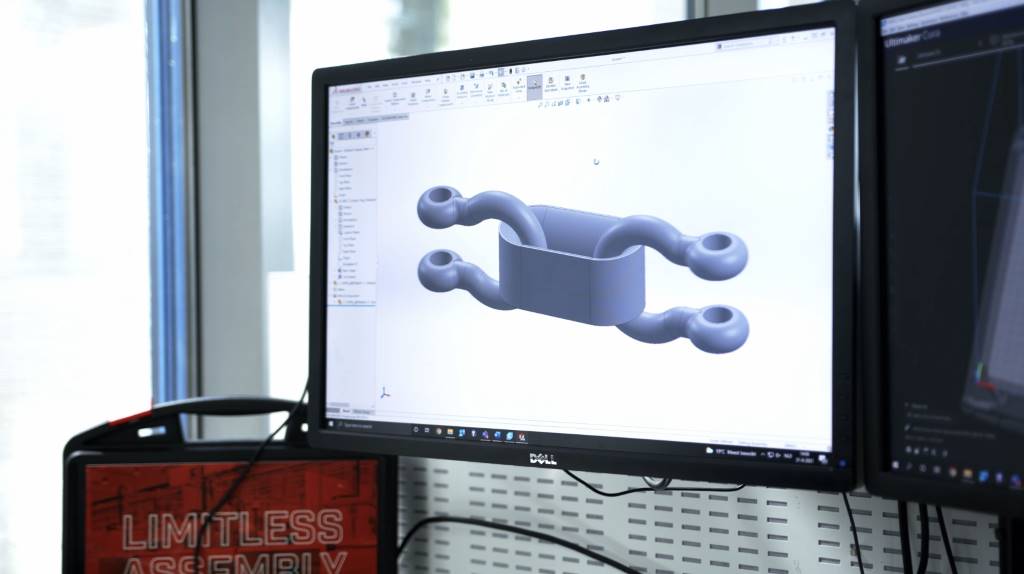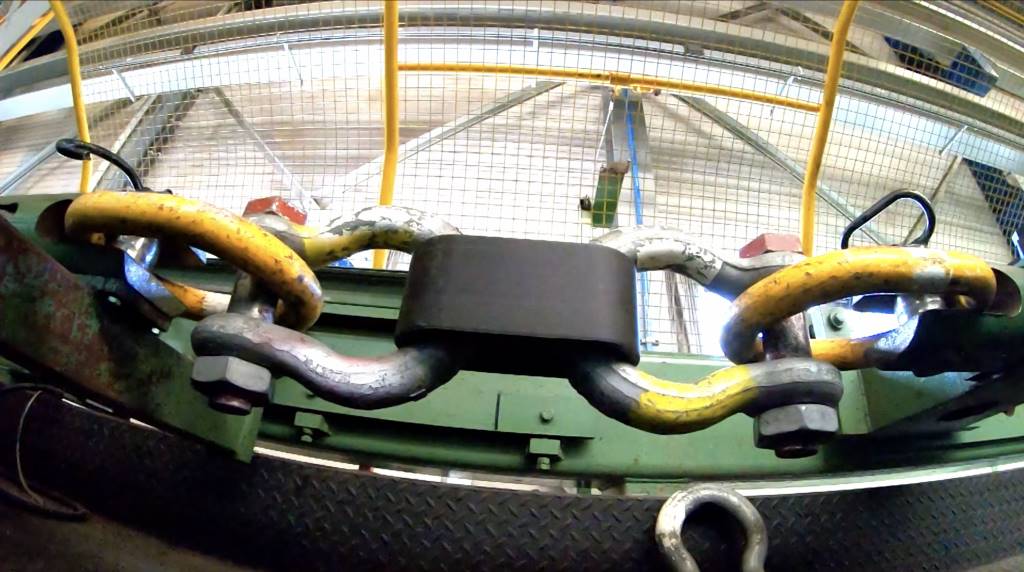Lift-off with 3D printed composites

The Royal Dutch Navy and Ultimaker have lifted a 12-tonne armoured vehicle to demonstrate the strength of a 3D printed composite part.
The exercise took place to demonstrate the strength of the material in a real-life application as opposed to a traditional material testing machine.
To lift a heavy vehicle using a 3D printed part, the engineers first needed to analyse the existing hardware. The Royal Dutch Navy had a special Buffalo military lifting vehicle at its disposal which uses two openable steel shackles to connect to the crane and to the cables attached to the vehicle being lifted. An elongated O-shaped printed link would be able to connect the two shackles and lift the heavy vehicle.
After importing the geometry of the shackles into CAD software, Ultimaker application engineer Lars de Jongh was able to create the initial design for the link. For the design to work, the link required a flat side for a stable 3D print and needed to be printed with layer lines in the same direction as the forces projected on the part. In addition, the printed part and the shackles interacting surface should be as large as possible to spread forces evenly.

Once the design was complete, the engineers needed a material that would be extremely strong and able to absorb short peak forces. They opted for Addigy F1030 CF10 from Covestro carbo, which matched the set requirements. This nylon-based polymer is loaded with carbon fibre and can be printed using the Ultimaker S5 and CC print core.
The design was optimized before printing using computer simulations. Covestro digitally applied the forces on the design using software that knows the exact physical properties of its carbon fibre nylon material. By running simulations, the engineers were able to identify where the design needed to be adjusted and where material could be removed. This created an optimized design which could lift more weight, while needing less material, resulting in a faster production time with less cost.
After several months of designing, printing, testing, and planning it was time for the lift. The 2-kilo solid carbon fibre reinforced nylon link was placed between the M113 armoured vehicle and the Buffalo crane. The metal rings were tightened in place, and four cables were attached from the lower hook to the vehicle. The crane slowly started to move up, putting the cables and 3D printed part under tension. Then, the 12-tonne vehicle slowly rose up, hovering above the ground, hanging from a 3D printed link. The Buffalo drove around, backward, forward, turning around, but the link held up perfectly.

In September 2022 Ultimaker completed a merger with US-based MakerBot. Under the new brand, UltiMaker, the company aims to provide easy-to-use and accessible 3D printing hardware, software, and materials for any application, driving the industry to a future state of responsible and sustainable manufacturing.









